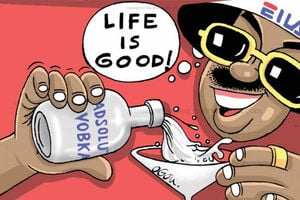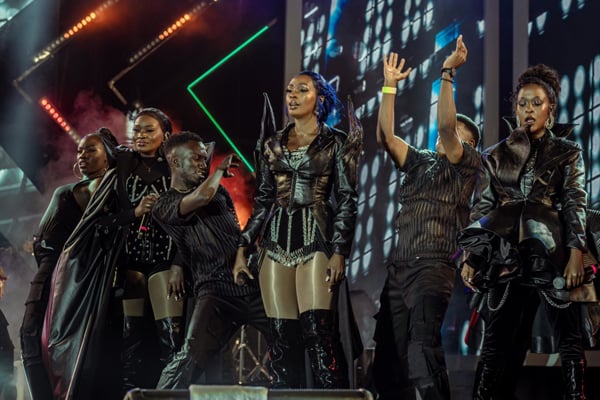
Experts say sound is as important as the other components in cinematography and appealed to film-makers to invest heavily in sound. Photo | Andrew Kaggwa
When many people watch a film, it is easy for them to appreciate the prowess of the actors and the team behind the camera.
When we are in the cinema, we expect to experience the vision of the director; vibrant colours and action sequences. For dynamic film makers such as Martin Scorsese, Quentin Tarantino, Steven Spielberg, or Sir Ridley Scott, a film is not just a story they tell, they sell their cinematic style and formula.
For instance, Tarantino breaks the cardinal rules of storytelling by doing many of his films in a non-chronological order. Sometimes, he mixes up character story arcs, while Ridley Scott treats every frame in a meticulous way, composed to tell a story and immerse a viewer in it.
In Uganda, Loukman Ali has mastered the art of using lighting to skillfully win in storytelling. When you watch scenes where his characters are in a house, he will always make use of windows and rays of light illuminated from them.
Besides the visuals and the actors, nothing draws the audience closer to the story or makes an emotional connection like sound design. When sound and visuals collaborate, a film is transformed from a series of moving images into a fully-fledged multidimensional journey.
Sound is what you listen to when you watch a film; it moves and gives the film a feel or mood. While teaching a group of filmmakers in Arua during the Moving Identities Film Tour by Goethe Zentrum and Alliance Francaise, Rebecca Amulen, a production sound mixer and on location sound recordist, told her class that sound can ruin a good film.

“You can have a very good story, but the moment the sound fails to make sense, you technically do not have a film,” she says.
“Imagine your favourite movie and try watching it when sound is muted. Try enjoying an Avengers movie with no sound; the experience is suddenly lost. When Thor comes and hits the ground, without the sound, the impact is lost. Sound adds this whole new dimension to the experience,” says Andrew Ahuura.
Ahuura is an audio engineer, creative, composer, mixer, arranger, producer, and managing director, Quad A. His work includes The Girl in the Yellow Jumper, the Nigerian thriller Brotherhood, and Sixteen Rounds, among others.
In a film, there are many sounds that people listen to; sometimes, without knowing it, there is dialogue—people talking to each other, there is music, and the sound effects.
The sound effects could include foley sound, mainly sound that humans in the film interact with, such as ringing a bell, opening a door, or kicking a ball.
Ahuura says sound for film is mainly about separating these different sounds to manipulate the audience into feeling the way you want them to, by choosing what their ears should focus on.
Locally, sound is one of the most ignored components, when people are making films. For many, once they have the right camera, the assignment is as good as done.
In her class, Amulen told her students, many of whom are established film makers in northern Uganda, that sound is as important as the other components in cinematography and appealed to them to invest heavily in sound.
In addition to demonstrating to them a starter kit for those aspiring to major in sound recording, she emphasised the importance of reading scripts to plan ahead.
From helping the audience follow what the characters are saying, to creating emotions that matter to specific scenes, it is sound that manipulates the audience to feel a certain way about a scene and creates the impact the writer and director may have intended in the early stages.
Getting a dedicated microphone for the main audio, picking the right audio equipment, choosing locations with minimal background noise and positioning a microphone as close to the sound source as possible, are some of the tips of having quality sound in film production.




